Hello to all readers of the IPMS USA Journal.
My name is Hideyuki Shigeta and I am president of Zoukei-Mura.
I am so very grateful and honored to have my words printed in this fine journal, a long-standing authoritative source of scale modeling information. I never expected to have such a special opportunity.
I am sure that anyone who has built even one of our Zoukei-Mura Super Wing Series (SWS) plastic airplane models has realized that these kits are all developed to bring my own long-held hopes and dreams to life and then sold to scale modelers all over the world.
Here in Japan, where I was born and raised, we have traditional sayings such as “even useless things have a use,” “the gods live in the details,” and “one’s work shows one’s true spirit.” These phrases tell us that in actuality, those things which may seem meaningless or useless at first glance can be crucial, to the point of completely altering everything when they are gone. This also applies to artisan crafts and construction there must be no lapse of quality, even in those areas which will be completely covered when the work is completed and no one would ever know except the one who created it.
There is also the Japanese culture of bonsai appreciation, which has existed for many centuries and continues to be popular today. This fascinating pastime consists of growing broadleaf trees and conifers such as beech, maple, cypress and pine which in nature would grow to enormous size in a small ceramic pot the size of one’s hand, spending years and decades trimming away at the branches to keep the shape and meticulously placing moss, grass, and rocks in the periphery. It encapsulates the magnificence of natural beauty and the eternal flow of time, a philosophical pursuit of truth.
Other traditions include Chado (“the way of tea,” tea ceremony) and Kado (“the way of flowers,” also known as ikebana). There is Kyudo (“the way of the bow,” the martial art of archery), Kendo (“the way of the sword”) and Judo (“the gentle way,” a Japanese martial art). These ceremonial practices and martial arts are our traditions and customs that express our Japanese way of life as well as guide us in our actions.
In addition, many Japanese people have Bushido (the way of the warrior) flowing as a constant undercurrent in their spirit. This is a philosophy, a way of thought, an understanding of life and death. We do not usually show this on the surface, but is always present whenever we put our hearts and souls into accomplishing something. Bushido is the values of benevolence, sincerity, fellowship, and honor; a hatred of cowardice and a respect for dignity and morals. Of course, this “spirit of Bushido” is invaluable when we develop SWS kits, and we are proud to have our products reflect this. The kamikaze actions that occurred in the final stages of WWII were a manifestation of the Bushido mentality in the Japanese Army, an act of “fellowship,” motivated by the desire to protect all they loved their country, their families even if it meant throwing away their own lives.
Let’s get back to the story of Zoukei-Mura SWS. I started the small plastic model company Zoukei-Mura twenty years after starting VOLKS Inc., which began as a scale model hobby shop. My wife and I started our tiny store together as newlyweds on December 3, 1972. Our first shop was only 11 square feet in size, located in Kyoto, the ancient capital of Japan will over 1200 years of history. This would be the start of our scale model chain with stores in over 20 locations across major cities throughout Japan.
We were both still very young. I was 25 years old and my wife was 21. It was a dream come true to open a specialty store selling aircraft models, which had been my personal hobby for many years. However, at the time there were already many successful model shops in the surrounding area of our tiny store. We only sold aircraft model kits, paint, and tools, which was an uncommonly limited lineup. Perhaps this was why we struggled to make ends meet after opening the store, and there were times when we could not afford a decent meal.
I eventually realized that it was simply not possible to run a successful business limited to my own personal hobbies and tastes alone. Slowly, we began to broaden our stock to include cars, warships, as well as radio-controlled models and anime-related products, following the growing trends at the time.
Our store was open every single day, 365 days a year, without rest or holiday. After ten years, we had finally grown enough to open our first branch store. At that time, most of our customers were boys and young men. All of a sudden, they stopped coming into our store. When we asked why, they replied “I’ve found something more exciting than scale models.” It turns out that another company based in Kyoto, a game maker called Nintendo, had started selling their small handheld electronic games known as “Game & Watch,” and all of the children were obsessed with them. You could just take it out of your pocket and turn on the screen with the flick of a switch. Unlike building a model, there was no need to read a complicated instruction manual or polish the parts, no need for the skills of assembly and cementing. The game could be started and finished anywhere, at any time. This was an incredibly powerful rival for us, as they wielded the advantage of an entirely new type of hobby enjoyment. To top it off, this expensive product cost many times the price of a model kit, and therefore it was treated as a special item, a point of pride for those who had it and of admiration from those who did not yet have one.
Our store, struck by the direct attack of this powerful rival, was left deserted. Not only was our profit gone, we had no customers even visiting our store so there was nothing to be done. By that time we had expanded to have multiple branch stores. Including the staff members working at each store, we had a fair amount of employees. Above all, my wife had just given birth to our two daughters and eldest son. I had a responsibility to all of them to make sure the business did not fail. That is when I decided to try making kits based on Godzilla and other monster figures that some of our regular customers had been making by hand with clay and bringing to our store to show us. This turned out to be massively successful, and after a few years we were able to establish a store in faraway Tokyo as well as selling our products to customers throughout Japan by postal delivery. We called those products “garage kits” and we continue even now to produce and sell many of them. We even were able to travel to the United States to run booths in a figure expo held in Washington D.C. in the 1980s and Mad Model Party in Los Angeles.
Of course, I couldn’t help myself but to add WWII aircraft to our resin kit range of monsters, heroes, and anime characters. Kits included Luftwaffe He 219, He 100, and Me 262, as well as Allied aircraft like the Spitfire Mk 22 and F7U Cutlass. However, these kits were so incredibly expensive and rare that only a few were actually produced, and the majority of kits were never sold before we ended production. Years later, someone brought one of those long-forgotten kits to the IPMS USA Nationals to show us at our Zoukei-Mura booth, and I was truly moved. Thank you very much to that IPMS member. I am still so grateful for that, even today.
It must have been around that time that I quietly promised to myself that one day I would make a real injection-molded airplane kit. And to my surprise, ten years ago from today, that dream came true! By that time, our VOLKS stores primarily sold anime-related models and radio-controlled models, and our stock of scale models was almost entirely gone. New product releases from scale model companies had also dwindled down considerably. Upon further investigation, it seemed that about half of the formerly major companies had either stopped production or had closed entirely. Their molds were being sold off right and left. My heart filled with dread and worry if things continue this way, the kits of the aircraft I dream of will never be released, and I will never have the chance to hold them in my hands.
Then my wife, my partner in business, said one thing to me that would change everything: “If you’re so worried, why don’t you develop the kits you want to build, just how you want them to be made?” I have never been so moved and inspired as I was in that moment by her words. (Keep this a secret from my wife, OK?)
Maybe I really can develop my beloved plastic aircraft model kits, just the way I wish…?
Could it really be?! At the thought that this could be possible, my chest was full of a joy so strong that I wanted to pinch myself to see if I was awake. With my face aglow and my heart beating fast, I started to imagine that my dream may come true and my mind was full with thoughts like “I want to do this and that, and if I do that I must also make that one!” A fleet of many different airplanes was flying through my mind. I could almost hear the roaring sounds of the propellers and jet engines.
That’s right. I am just like you, wishing for this aircraft and that one to be made as a plastic model kit. And if I can develop them myself, I want to do this and that no that one must be this way I was entranced, forever talking to myself in this endless dream. Yes, I am just like you. I have purchased so many plastic model kits over the years. And when I would build them, I would think “Hmm, this shape doesn’t look quite right…” and “This is clearly incorrect, isn’t it?” And then my thoughts would lead to how I wish it were made differently. Using the scarce photos and any illustrations or other documents I could rely on, I would sand down and saw off and putty up the offending pieces as I built, as my own sort of small and quiet resistance.
It goes without saying, but the outer shape of each aircraft is a beautifully complex combination of three-dimensional shapes, straight lines and slightly curved lines, all of these subtle elements coming together create the silhouette, almost mysteriously so. Therefore there is a special, magical attraction that can only be felt when looking at the aircraft itself from every angle. The more books and photos of the actual aircraft that one obtains, the more that feeling grows. Here in Japan there are unfortunately very few remaining aircraft from WWII, much less working historical aircraft. And there are only but a few small aircraft museums in Japan where one can freely visit. Even the historical photographs must have all been burned to a crisp, because only a few blurry images remain.
When my family and I went on a trip to the States to celebrate the graduation of my youngest son who was studying in the U.S., I couldn’t resist but to drag my entire family to Naval Air Station Pensacola just so I could see the Blue Angels flight demonstration. After seeing the breathtakingly spectacular performance, we of course headed right to the National Naval Aviation Museum. I was truly amazed to see aircraft ranging from the beginnings of aviation to the latest cutting-edge jet airplanes, all lined up on display in the gigantic space. However, what surprised me even more was to see children freely pushing the horizontal stabilizer of an aircraft on display (it was an F4F) and playing under the gigantic aircraft like the A-1H and TBF. Everyone is allowed to touch the aircraft at this museum! I had never seen such an enviable sight. After a short while, people started to gather. A large number of museum workers had begun to push a small aircraft toward a corner in order to clear a space in center of the museum, calling out to one another in strong voices! My family of six and I could only stand and watch in awe. If only even one aviation museum like this existed in Japan… That was all I could think about, even after we returned to our hotel. No matter where we went, my mind and eyes were only focused on what could be useful to create my Super Wing Series. I could tell from their faces that my family was getting pretty fed up with me.
The majority of kits had instruction manuals with no Japanese text. Other than the English words, one could only rely on the illustrations for guidance, making it nearly impossible to enjoy the kit with a deep understanding. The only choice was to make full use of one’s limited knowledge and imagination to build some way or another. In most cases, the assembly parts were only labelled with a number or letter, with no explanation of what exactly those pieces were and how they moved in the aircraft, leaving it all an unclear mystery. On top of that, it was all too common to find that the order of assembly or attachment angle was incorrect in the manual, or the piece was completely backwards. Assembly required moving forth without really knowing for sure which parts to attach where in order to complete the aircraft, much less which specific aircraft one was building. Many also did not include directions for which paint colors to use. Even after struggling and working hard to complete the model, the end result was quite mediocre at best. Hmmm. If I was behind this kit, I’m sure I could make a more understandable, more through explanation… These thoughts nagged at me, even though it really was none of my business.
For us Japanese scale modelers, we have almost no opportunity to see the actual aircraft in person, much less up close. So we naturally wonder about the internal structure, materials, and how the aircraft are manufactured, and the mechanisms and movement of the machine. I always sighed while turning over the fuselage and wing parts in my hands if only there was a kit that could give me a greater understanding of the secrets that lie behind all the various small bulges and access openings, revealing the reason for their existence. Why did this aircraft end up in this shape? What was the purpose for designing this area in this way? Various magazines and reference books would sometimes include descriptive diagrams of the internal structure, but these diagrams could not possibly measure up to the powerful and magical quality of the actual aircraft, making me grow impatient with this half-baked answer.
I was especially eager to know about how the engines, both air-cooled and liquid-cooled, were mounted to the aircraft, as well as the shape of the mounts and their design. I was fascinated by how the tremendous power of the heavy propellers rotating at high speeds was received and how the torque was properly balanced. However, I struggled to find any scale model kits that could explain and resolve these questions that I was so interested in. There were kits that only included the parts of the engines visible from the front, leaving out exactly what I wanted to see. Some kits didn’t even include engine parts at all. There are so many different types of propellers, reflecting the era, country, and manufacturer, as well as the different aircraft and varies purposes and tactics they were intended for. For SWS kits, the development of propeller aircraft starts first with examination of the actual propellers, checking the shape and measurements. I believe that if the propellers are inaccurate or not molded sharply and beautifully, the level of satisfaction with the kit will be drastically reduced, even if every other aspect of the model is well done. SWS kits are not designed to be completed by simply sticking the parts together as instructed. The final adjustments are made by the modeler themselves, lightly polishing and sanding down to give “life” to the model.
Another crucial aspect of scale models are the connective parts attaching the wings and fuselage. The structure of the cockpit in which the pilots would risk their lives, the structure of those vital wings which give the machine flight, these are always central aspects of discussion with the SWS development team. And another crucial factor is how to replicate the landing gear and how they would be extended and stored, the structure and method of movement, in a way that is unique to scale models. One can imagine the tactics and usage of the aircraft from the attachment of the fuel tanks and their size and shape. For fighter planes, the modeler can learn about its complex structure and functions from assembling its weapons and armor, gaining a fuller understanding of the series of motions from loading to spent case ejection.
All of these parts sometimes hundreds of them in one kit come together to make a single aircraft. However, if the assembly is a painful and arduous process, that scale model will be no fun at all. There’s no reason to build a kit unless every moment is full of excitement and anticipation, from when the first part is cut from a sprue until the final completion, a truly elating experience giving one a real sense of accomplishment. That is the type of kit we aimed to create, kits chock-full of dreams.
That is the Super Wing Series.
Just as the saying goes, “If you prioritize one thing, something else must be sacrificed,” my SWS plan, so full of hopes and dreams, was truly a ferociously hungry “money-eater.” When I began the project we did not realize rather, we were just so completely naïve about injection kit molds that we did not have the skill to notice that the cost of development would hit us like a landslide. The truth is that I foolishly had not realized the obvious reason for why it was so common to have over-simplified products.
Our simple garage kit manufacturing method, which we used to create the majority of our products until then, consists of casting silicon and resin from molds based on wooden or clay masters. This method was useless for injection molding, as it is a fundamentally different process. In order to make each and every part molded in deep and fine detail, and to make sure that the complex assembly resulted in a cohesive unit, we had to make a wooden or clay model of the shape first. Then that shape would be broken into parts and laid out in a precise blueprint for the injection molds to be made. This is truly time-consuming work that can only be done by experts in the field who have experience and a fine-tuned sense to understand and predict the tooling process. Then the copper molds are created out of steel. Just imagining the process of carving into steel is quite daunting. First we had to learn the hard-to-understand rules of creating injection molds, and then apply those rules perfectly to hundreds of parts. After being engraved into the mold, injected with plastic and cast, those parts must all be usable and accurately fit together to complete the model. However, the more I demand that all the parts must be beautiful and perfectly accurate to the actual aircraft, this inevitably results in the tooling dilemma of “reverse taper,” a shape that prevents the parts from being cast from the mold.
This process can drag on for at least two years from when we receive “T1,” the first test-shot sample from the factory, until “T5,” the final test-shot we approve for production, requiring a great deal of patience and perseverance. Even we are somewhat shocked that we have the endurance to go through with it. On top of all that, the more I speak up about my hopes and dreams, the more “sliders” have to be used in production, suddenly hiking up the cost considerably. This is a major problem that was also present in all aspects of development, from the manuals, decals, product packaging boxes, to the cardboard boxes for transportation.
For the development of our very first SWS kit, the “Imperial Navy Interceptor Shinden,” there were many aspects on which I simply had to give up in defeat. Let me publicly announce here that there has not been a single kit since, from the Shinden to the latest Henschel Hs 129 to the F-4EJ Kai, a total of 34 kits, which had a development without any problems whatsoever. These past ten years have been spent learning that the magical material plastic and injection molds both indispensable for plastic scale model kits must overcome multiple great hurdles and difficulties before an acceptable kit can be born. Another one of my dreams is to offer modelers kits at the lowest price point possible while still meeting our standards. That is why SWS kits are made by international collaboration, from the planning and tooling layout created by us in Japan, injection molding by our factory in China who produce high-quality products at a lower cost, and the our decals and optional parts made by manufacturers located in Europe.
I originally thought that I could simply supplement the cost of SWS development with my retirement bonus to make ends meet, an embarrassingly overly-optimistic notion. Unlike the United States, business owners in Japan normally only receive three times the amount of their yearly income when they retire, a relatively small sum. Therefore, I was soon hit with the reality of the imminent exhaustion of these backup funds. While that is certainly not my only motivation, it is part of why I personally go to promote and sell SWS kits to attendees at IPMS USA Nationals and other IPMS events worldwide, in addition to the pure joy I feel from directly hearing everyone’s opinions and ideas.
As I always say, “SWS is my dream and your dream.”
I do not have enough words to fully express my gratitude to you and everyone worldwide who has added SWS kits to their collections. You are the reason why all of us here on the SWS development team of Zoukei-Mura have been able to continue our joyous work. Thank you all so very much. I strongly wish to continue to plan, produce, and ultimately bring to you even more terrific plastic airplane model kits.
These are dark times as the COVID-19 pandemic wreaks havoc throughout the world. Please take care and stay well. I send my best wishes to you from Japan, and hope that you will continue to fully enjoy the wonderful scale modeling hobby for many years to come.
Until we meet again, farewell for now.
Hideyuki Shigeta, President of Zoukei-Mura
I dedicate this article with deep gratitude to everyone who has supported and cooperated with the development of the Super Wing Series.


























































































































































































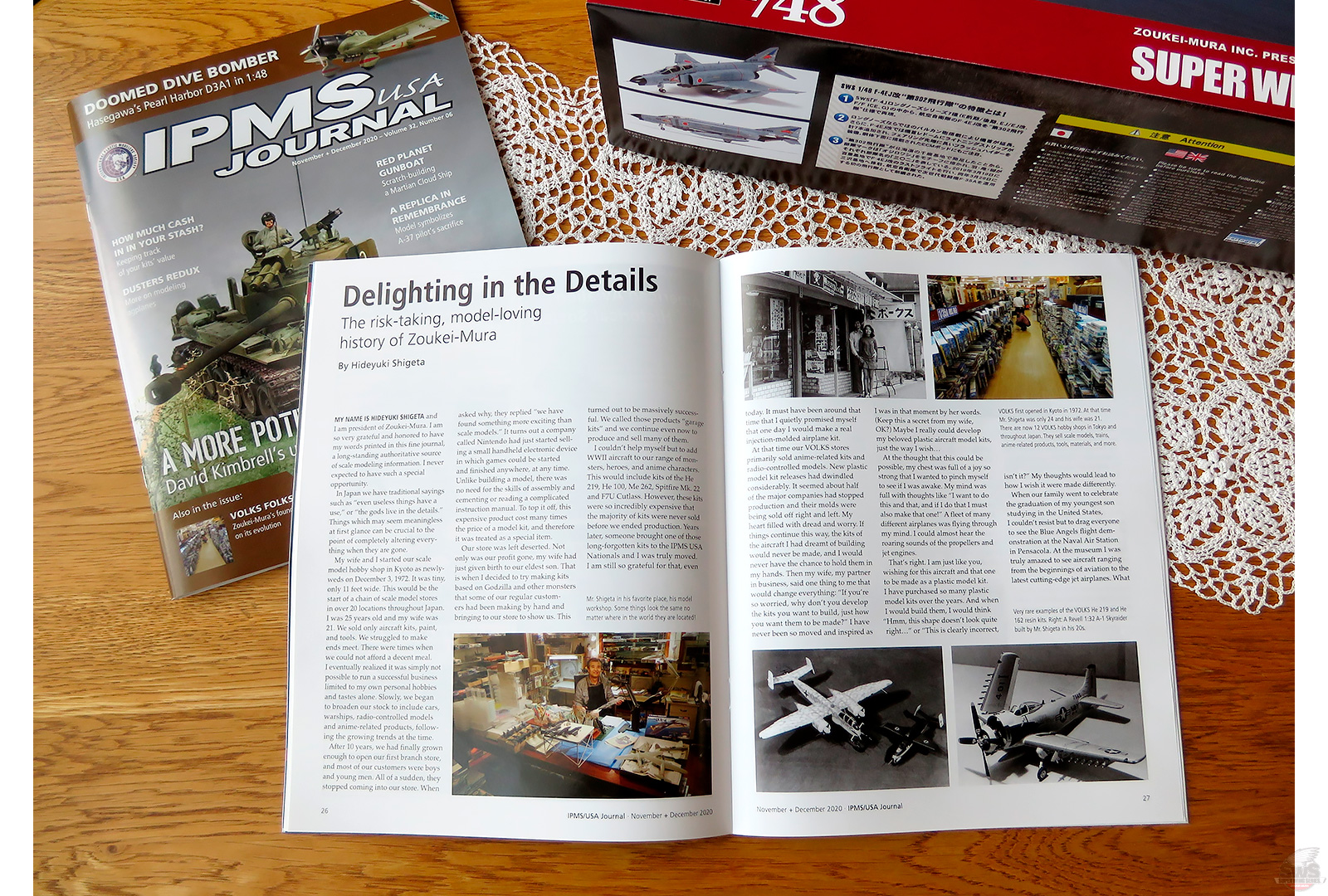
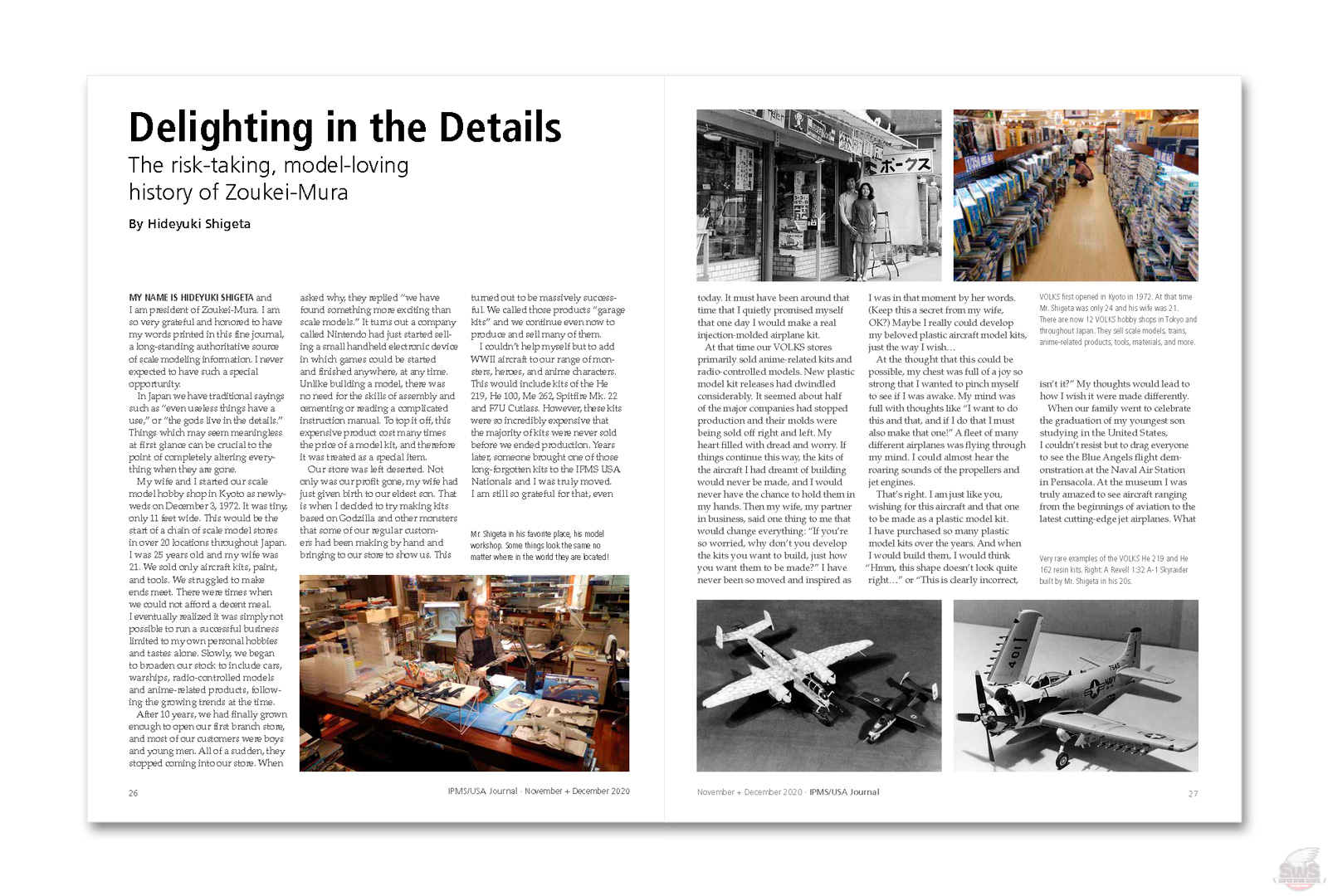
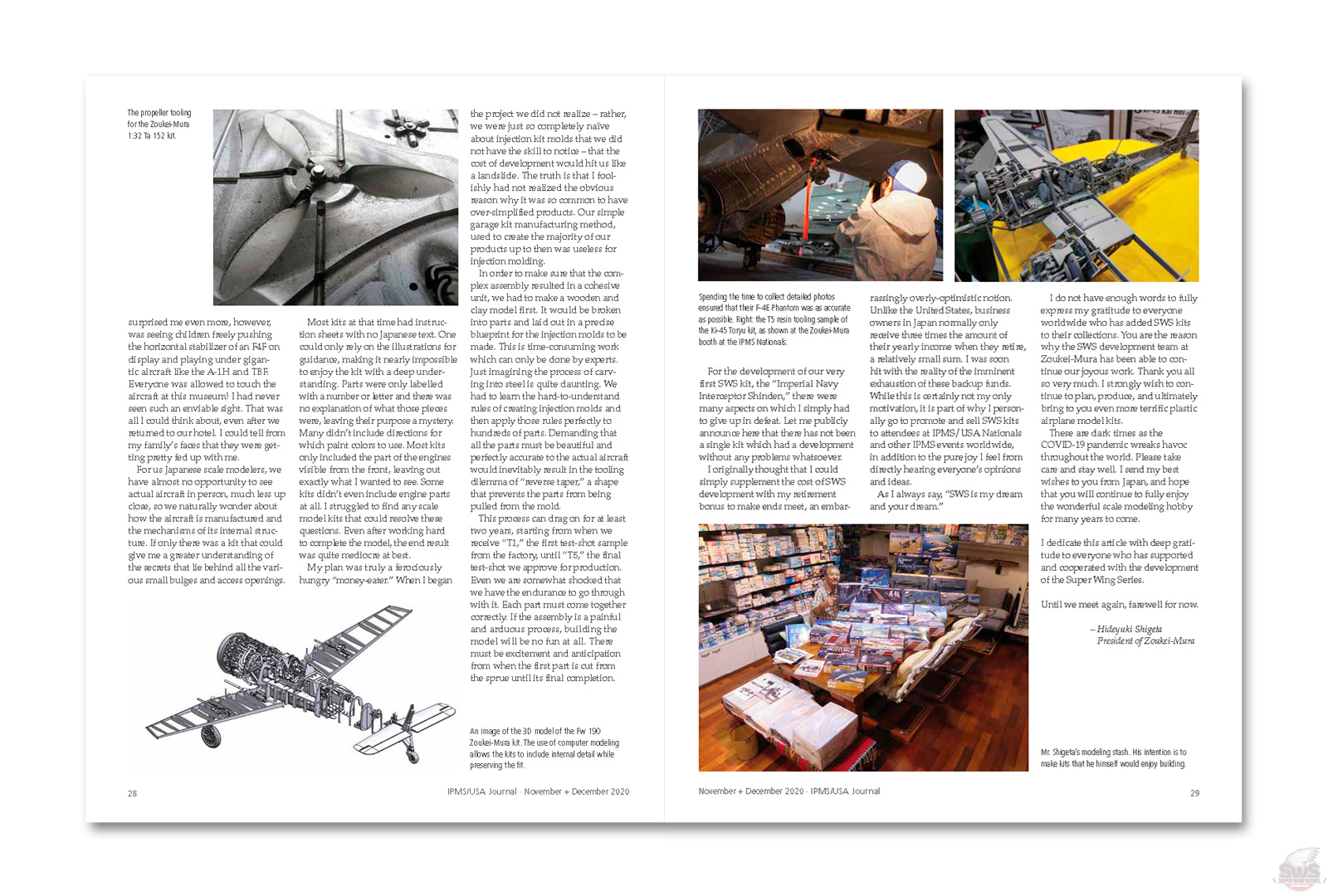
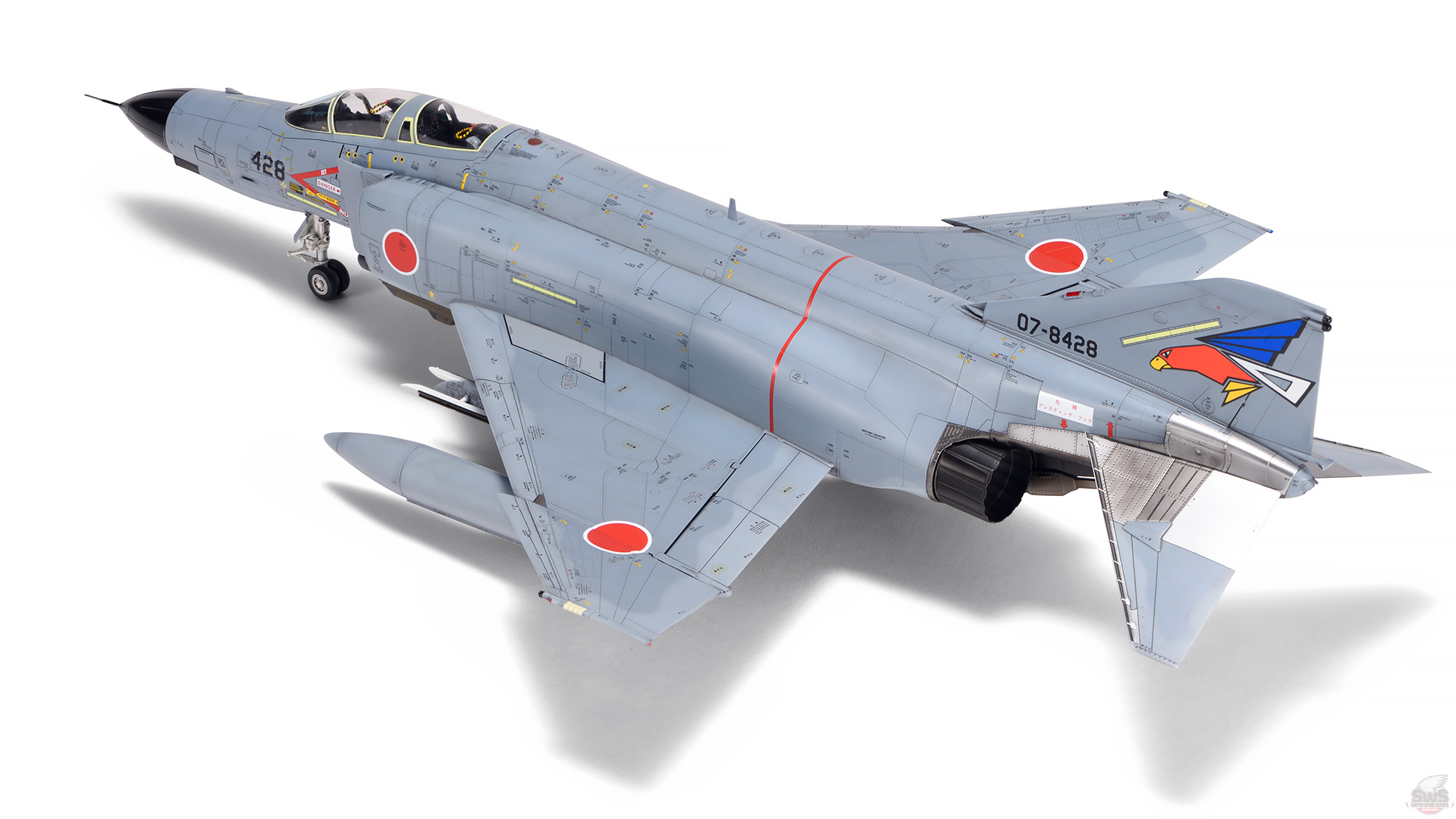
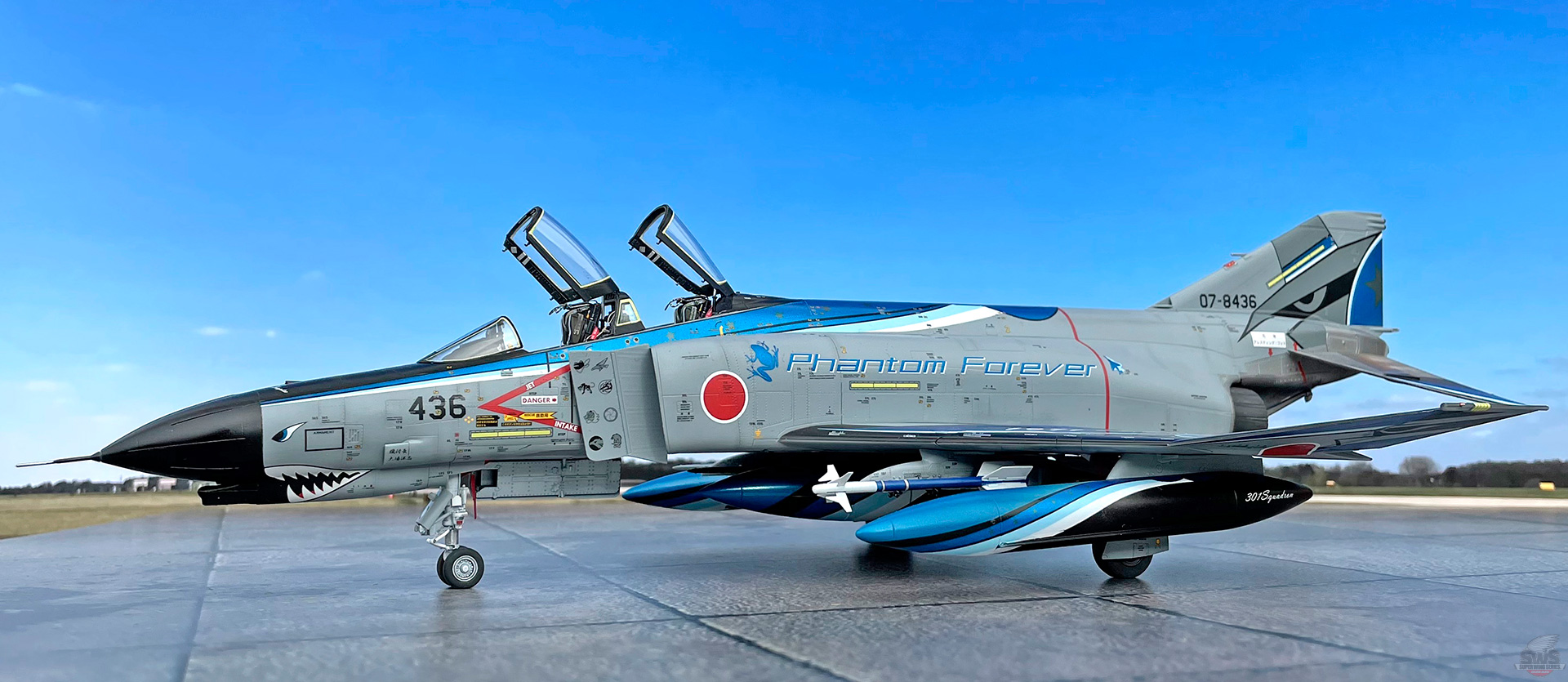
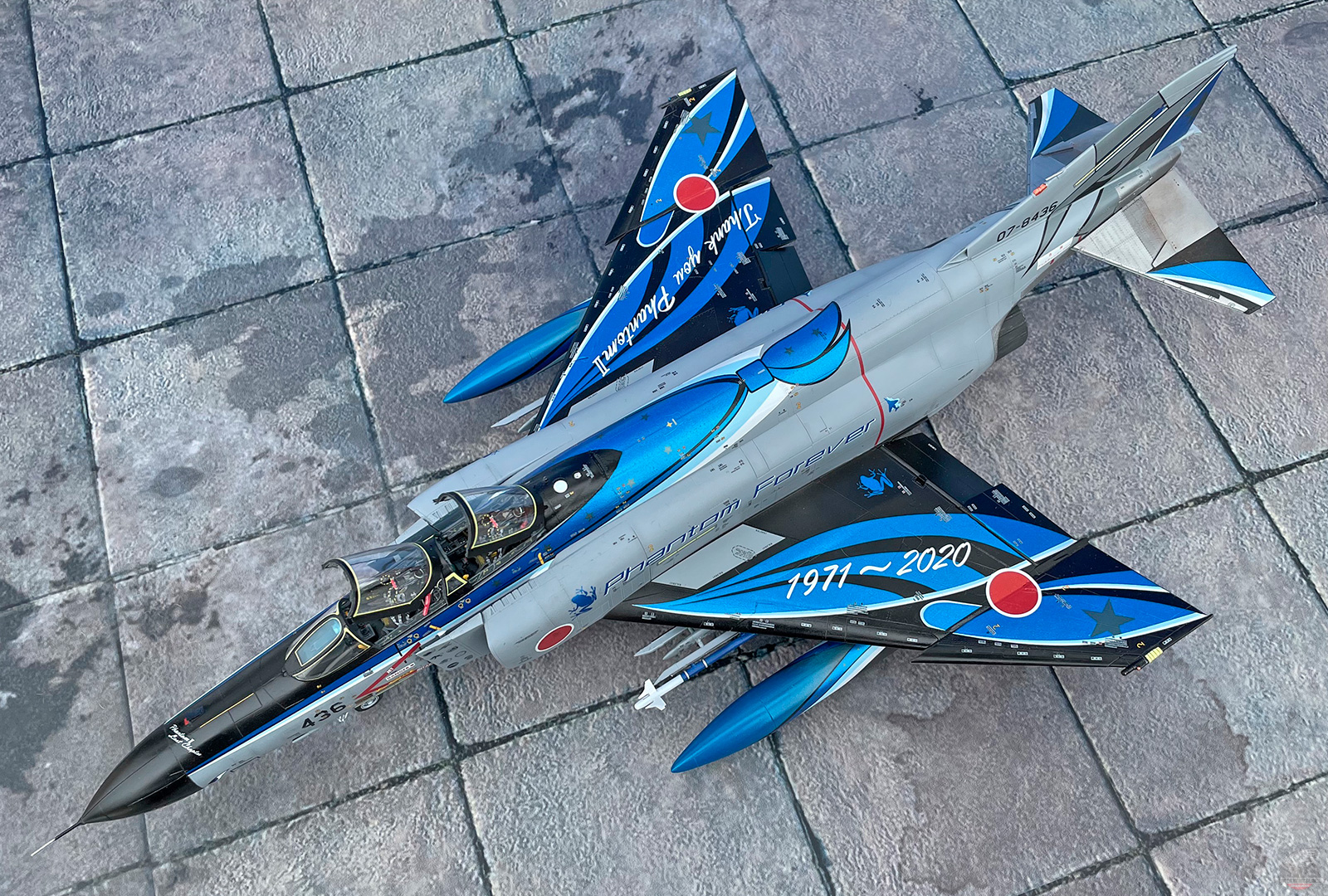
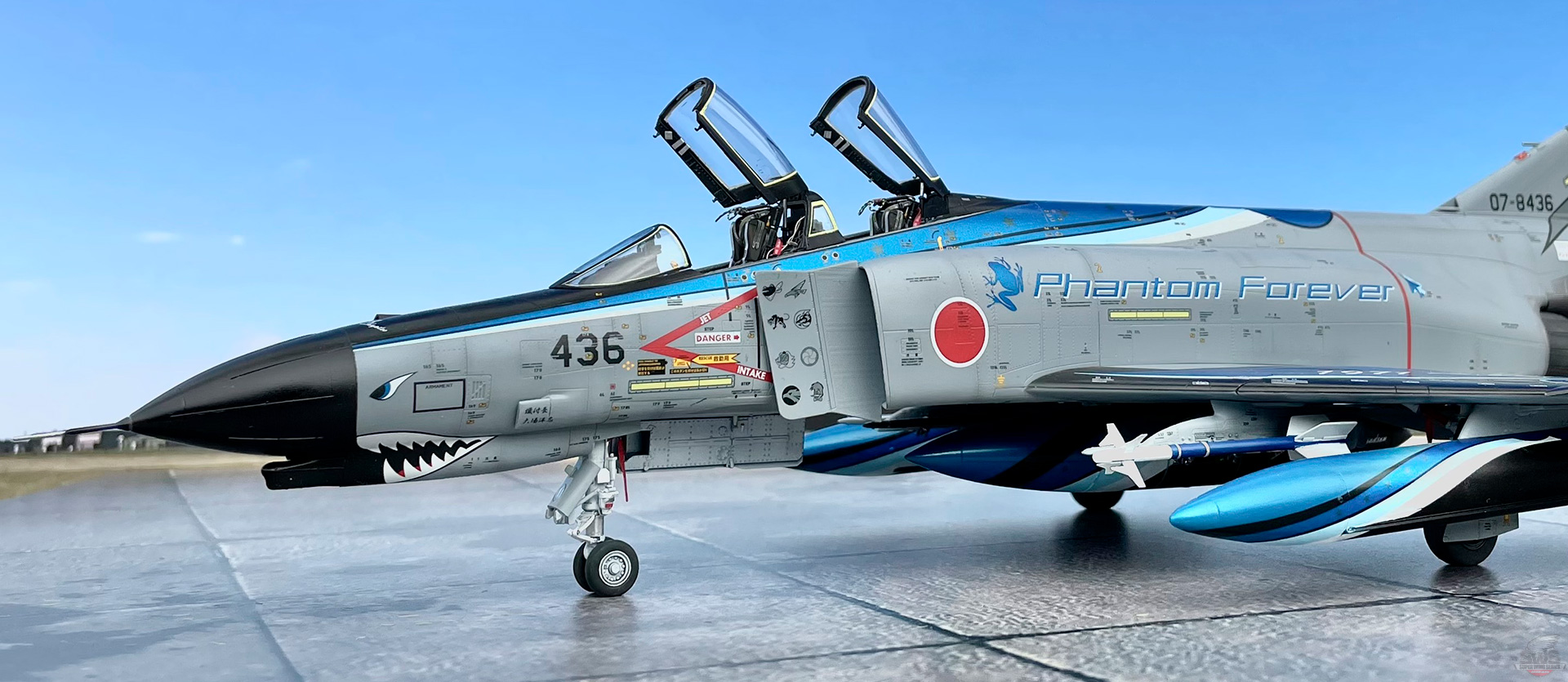
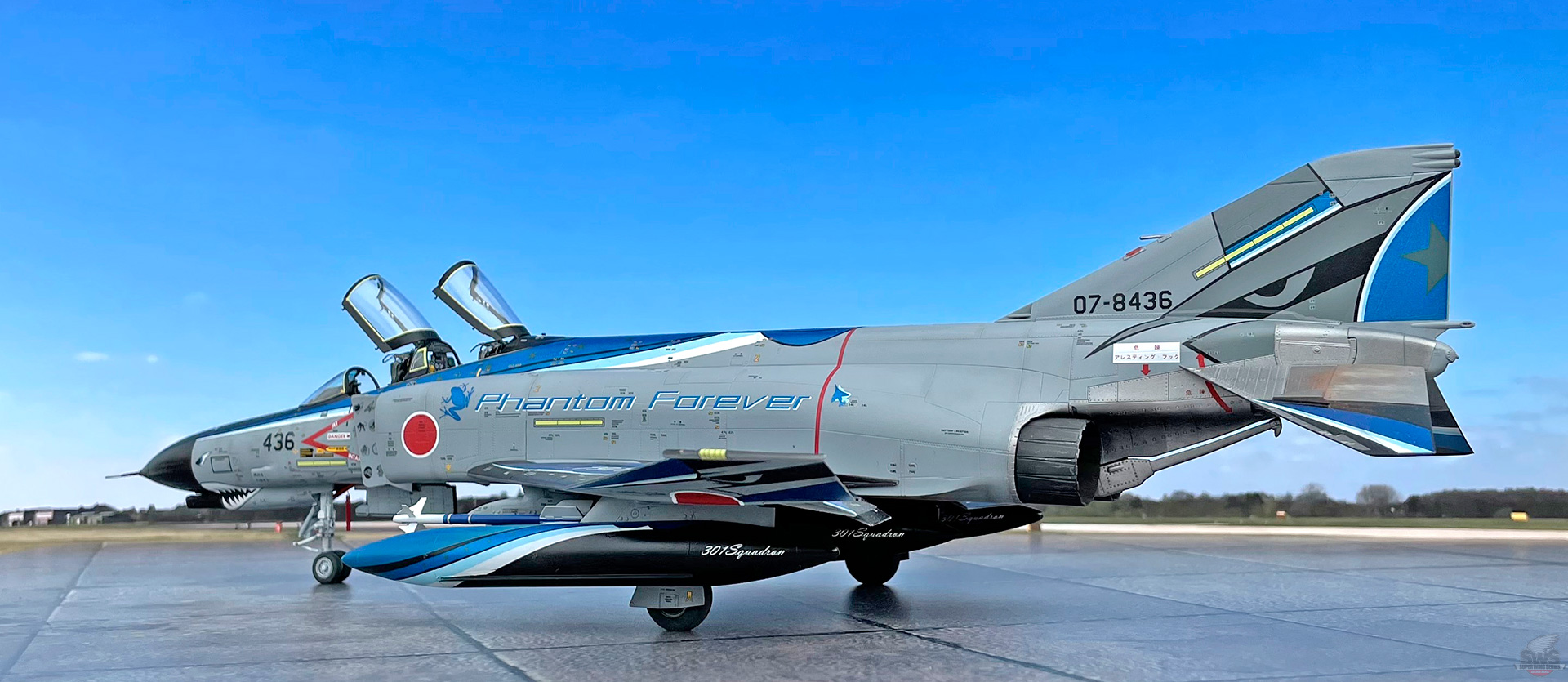


 Old Man Blog No.111Your Pre-Ordered Limited-Edition F-4EJ Kai "Phantom Forever 2020" Kit is Coming to You Soon!!
Old Man Blog No.111Your Pre-Ordered Limited-Edition F-4EJ Kai "Phantom Forever 2020" Kit is Coming to You Soon!!
 Old Man Blog No.113
Celebrating the 10th Anniversary of SWS!! Thank you for supporting our 34 releases!!
Old Man Blog No.113
Celebrating the 10th Anniversary of SWS!! Thank you for supporting our 34 releases!!
